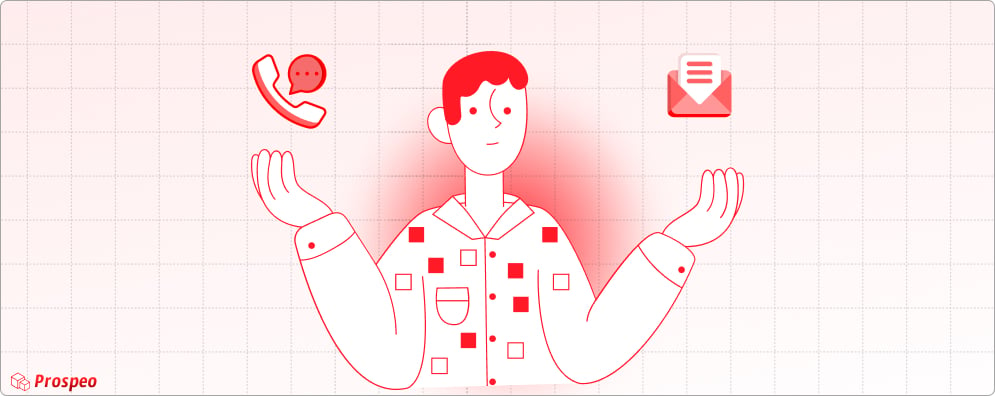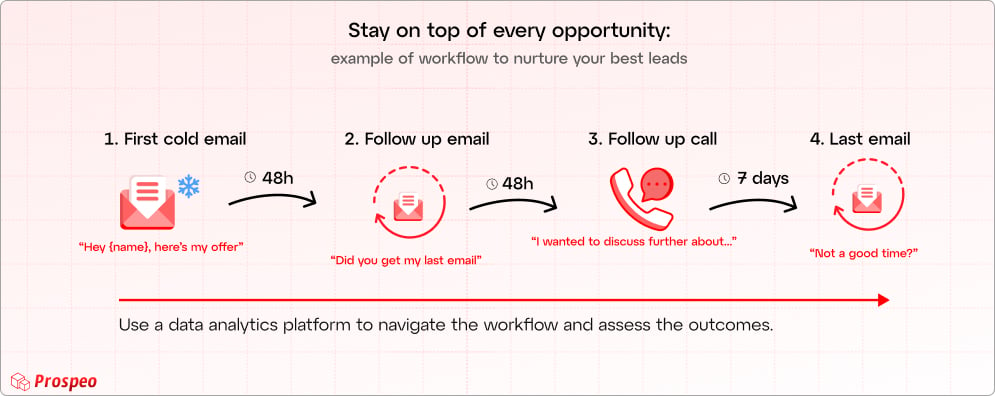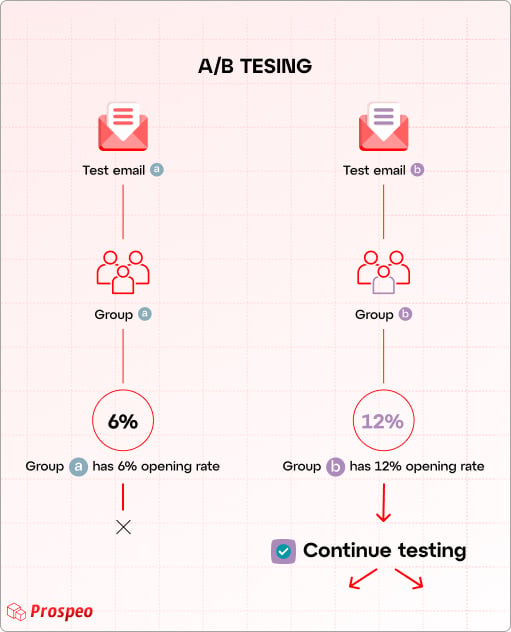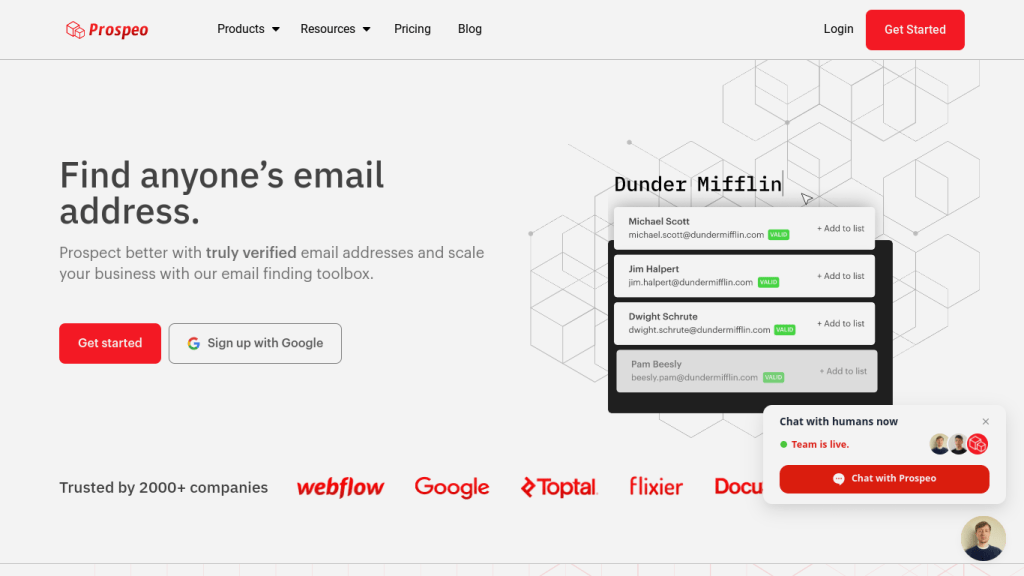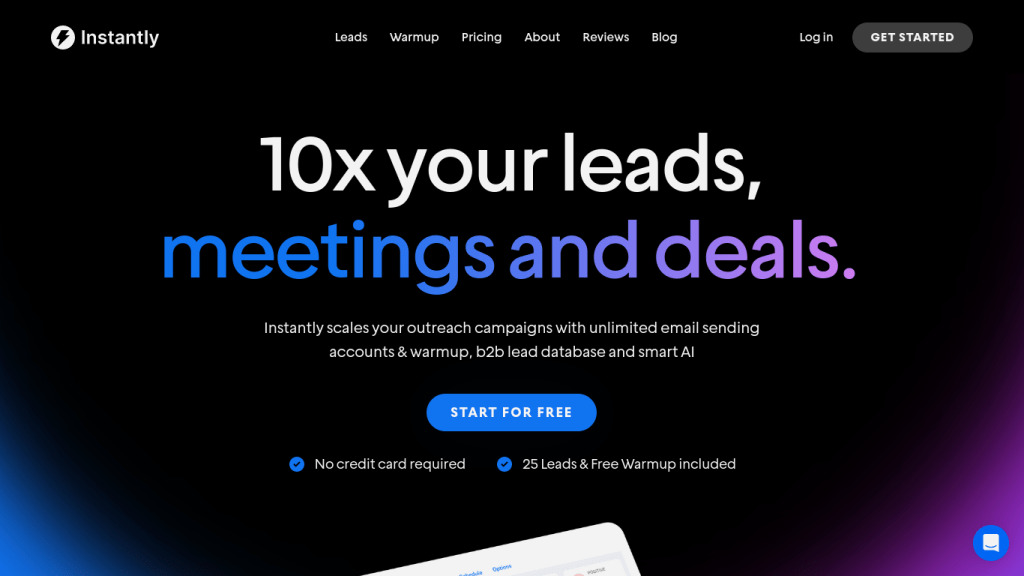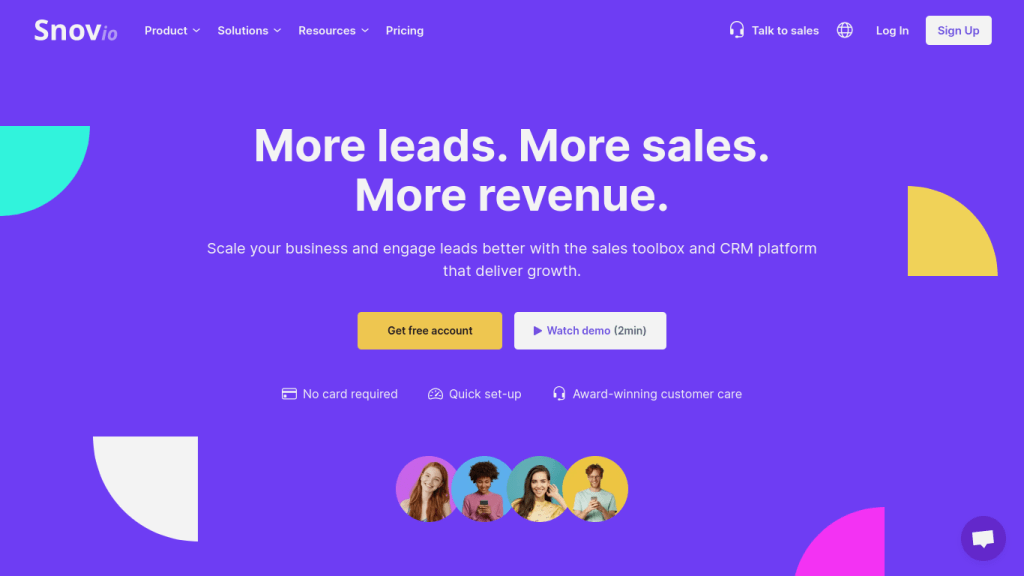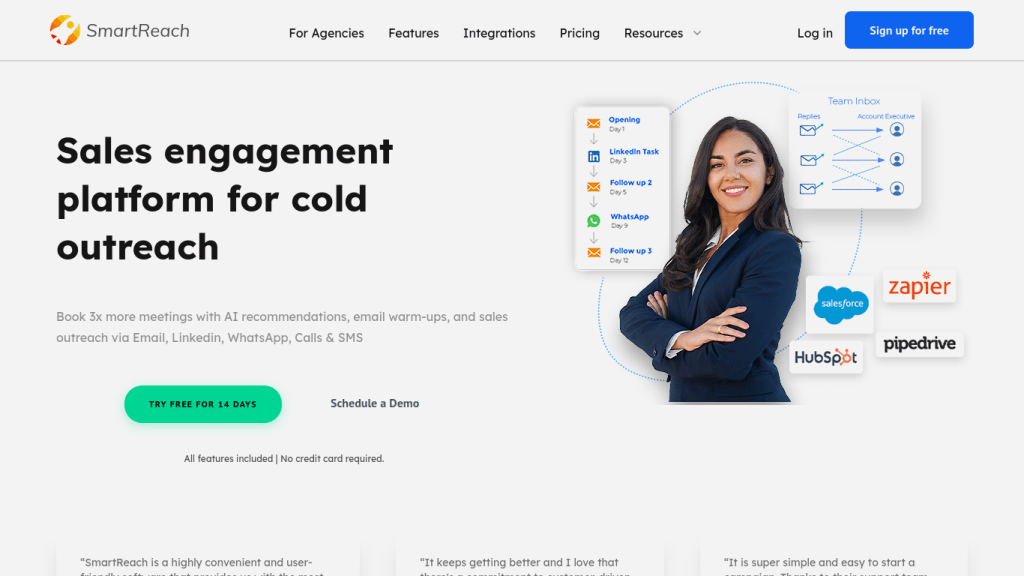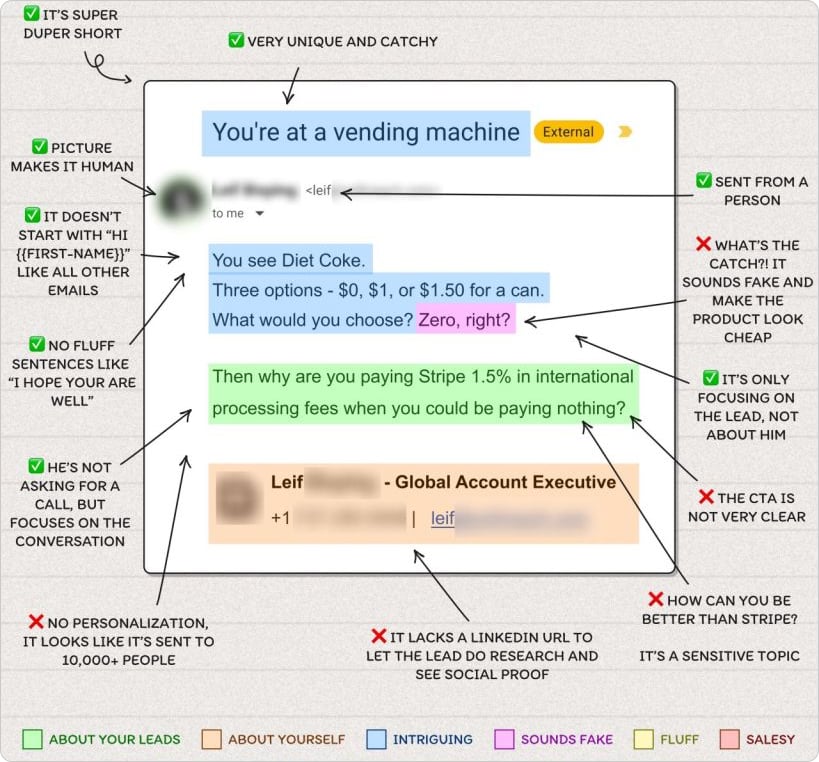Your Ultimate Guide to Cold Outreach: Strategies, Templates, Tools, and Tips
Cold outreach isn’t for the faint of heart; it’s the Wild West of business communication. You’re armed with nothing but your wits, a keyboard (or your phone), and a strong cup of coffee (or tea, or even a well-shaken martini if that’s your style), ready to venture into the unknown.
And we all know the unknown can be scary. But don’t worry, you’re in the right place. In this article, we’ll explore everything you need to know about cold outreach, from cold calling to cold emails and everything in between.
So, whether you’re a sales vet looking to set up your game or a newbie trying to figure out the ropes, we’ve got your back.
So, let’s dive in and see what it takes to master cold outreach.
What is Cold Outreach?
Cold outreach is the process of reaching out to individuals you’ve never interacted with before, using channels like email or phone, to introduce your product or service. While it might be more challenging than warm outreach, where some prior connection exists, the sheer volume of potential contacts makes it a strategy worth considering.
Cold Outreach Methods
Cold outreach comes in different flavors, but two of the most prominent methods are cold calling and cold emailing. Let’s take a closer look at each, their pros and cons, and why cold email is becoming the dominant force in this space.
Cold Calling
Cold Calling, the classic approach, involves picking up the phone and reaching out to potential prospects. This method is tried and true, and it’s been used since the invention of telephones.
Here are the main pros that come from using this approach:
- Immediate Interaction: You can engage in real-time conversations, which allows for instant rapport-building and the ability to address questions or objections on the spot.
- Personal Touch: Hearing a human voice can add a personal touch to your outreach, potentially making a stronger initial impression.
- Direct Feedback: You can gauge a prospect’s interest or disinterest through their tone and responses, helping you adjust your approach on the fly.
Of course, there are downsides to this method, which include:
- Time-Consuming: Cold calling can be a time-intensive process, especially when dealing with a high volume of calls.
- Rejection Sensitivity: Rejections can feel more personal and immediate over the phone, potentially affecting your morale.
- Limited Reach: You can only call one person at a time, limiting your reach compared to email campaign.
Cold Emailing
On the other hand, cold emailing is the digital counterpart, where you send unsolicited emails to potential leads. It’s a powerful method if done right, and it’s taken the spotlight since more and more people prefer digital communication.
Some of the notable advantages of cold email include:
- Scalability: You can reach a larger audience simultaneously, making it efficient for targeting multiple prospects.
- Precision: Craft and refine your message before sending it, ensuring it’s tailored to each recipient.
- Tracking: Most email platforms offer tracking features, allowing you to see who opens your emails and engages with your content.
- Automation: You can automate cold email campaigns, saving time and effort for other critical tasks.
- Non-Intrusive: It allows prospects to respond on their own terms without immediate pressure.
But it’s not all rainbows and roses. A few of the disadvantages that come with cold email include:
- Spam Risk: If not done carefully, your emails may end up in spam folders, reducing their visibility.
- Impersonal: Emails can lack the personal touch of a phone call.
- Overload: Inboxes are flooded daily, so your message might get lost or ignored.
While both cold calling and cold emailing have their merits, the ultimate success of your outreach strategy hinges on how well you execute your chosen method and the strategies you employ.
Cold Calling vs. Cold Emailing
When it comes to cold outreach, choosing between cold calling and cold emailing can significantly impact your strategy’s success. Each method has its time and place, and understanding when to use them can make all the difference in your outreach efforts.
When to Use Cold Calling
Cold calling is like a direct line to your prospects, best suited for scenarios such as:
- Selling High-Value or Complex Products: When you’re dealing with big-ticket items or intricate solutions, a phone call allows you to provide in-depth information and answer questions on the spot.
- Urgent or Time-Sensitive Matters: When a matter requires immediate attention, like a critical business issue, a phone call ensures a swift response.
- Building Personal Relationships: Some industries heavily rely on personal relationships, where voice communication can establish trust more effectively.
Keep in mind that approximately 60% of cold calls go to voicemail, so make sure you’re leaving a voicemail or following up with multiple calls.
When to Use Cold Emailing
Cold email has its own set of advantages and is particularly useful in these scenarios:
- Scalable Outreach: When you need to contact a large number of potential leads simultaneously, such as for initial introductions or event invitations.
- Informational Outreach: For sharing detailed information, resources, or educational content where the recipient can review it at their convenience.
- Initial Touchpoints: Cold emails work well as a soft introduction before following up with a more direct communication method.
While the average conversion rate for cold emails is around 8%, techniques like adding questions to your emails can boost your results by 50% or higher.
Combining Cold Calls and Emails
Of course, you don’t have to limit yourself to just one tool in your outreach toolbox.
In fact, combining cold calling and cold emailing can amplify your efforts and boost your chances of success. Here’s a quick way to do it:
- Warm-Up with Email: Start with a personalized cold email to introduce yourself and your offer. Mention that you’ll be following up with a call soon. This sets the stage and increases the likelihood of a warmer reception during the call.
- Follow-Up Calls: After sending out your initial emails, follow up with phone calls to those who showed interest or engaged with your email. The warm leads generated from email interactions can lead to more productive conversations.
- Personalized Messages: Use the insights gained from your cold emails to tailor your cold-calling approach. Reference the content or questions raised in your emails to demonstrate your attentiveness.
- Data Integration: Leverage technology and data analytics to track which leads respond better to which method so you can allocate your resources more effectively.
Remember that cold email campaigns have been shown to provide a 2X ROI compared to cold calling, making them an attractive starting point for your outreach strategy, even if you’re more geared toward cold calls.
How to Create a Winning Cold Outreach Strategy
Crafting an outreach approach that actually works requires meticulous planning, the right tools, and a clear roadmap.
Here are the essential components that make a winning cold outreach strategy:
1. Audience Research and Ideal Customer Profile (ICP) Creation:
Before you send a single email or make a call, you need to know who your ideal customers are. Start by:
- Defining Your ICP: Creating a detailed Ideal Customer Profile (ICP) is a pivotal step. It should encompass demographics (like gender and age), industry, pain points, goals, and even psychographics, if applicable. The more specific, the better.
- Market Analysis: Dig deep into your target market. Understand its size, trends, and potential opportunities or challenges.
- Competitive Analysis: Study your competitors. Identify gaps in the market or areas where you can differentiate your offering. What unique value can you bring to the table?
2. Lead Generation List Creation
Building a robust list of potential leads is the foundation of any successful cold outreach strategy:
- Data Sourcing: Utilize a combination of tools and sources to gather lead data, including LinkedIn, industry-specific directories, and dedicated lead generation platforms. Cast a wide net, but remember to focus on quality over quantity.
- Segmentation: Organize your leads into segments based on factors like industry, location, job title, and company size.
- Clean and Validate Data: Your data should be accurate and up-to-date. Invest time in cleaning and validating your data regularly to avoid wasting resources on unreachable or irrelevant contacts.
LinkedIn Sales Navigator for Lead Gen:
Have you explored LinkedIn Sales Navigator yet? It’s a reliable tool for building targeted email lists. With its straightforward features, generating and exporting leads becomes more efficient.
Fact: Sales Navigator is among the most extensive and updated databases available. This is a standard in the lead generation industry.
LinkedIn offers a free month trial for Sales Navigator. Need guidance? Check out this YouTube video on how to export a targeted email list for better outreach:
3. Automate the Workflows
Efficiency is the name of the game in cold outreach. Use automation to streamline processes:
- Email Marketing Tools: Invest in a reliable email automation platform that allows you to schedule, personalize, and track your email campaigns. Tools like MailChimp, Smartlead of instant.ly can be invaluable.
- CRM Integration: Connect your CRM system with your outreach tools so that that lead data is seamlessly managed, tracked, and updated across your organization.
- Workflow Automation: Automate follow-up emails, reminders, and lead nurturing processes. Automation ensures that no potential lead slips through the cracks and saves you time for other critical tasks.
4. Qualification and Lead Scoring
Not all leads are created equal. Qualify and score your leads to focus your efforts on the most promising prospects:
- Lead Scoring Model: Develop a lead scoring system based on factors such as engagement level (opens, clicks, responses), fit with your ICP, and intent to purchase. A system in place like this will help prioritize leads for your sales team.
- Lead Qualification Criteria: Define specific criteria that determine whether a lead is sales-ready, marketing-qualified, or needs nurturing so that your sales team isn’t chasing dead-end leads.
5. Define Key Performance Indicators (KPIs):
To measure the effectiveness of your outreach strategy, establish clear KPIs. These can include but aren’t limited to:
- Response Rate: Measure how many of your cold emails or calls receive a response.
- Conversion Rate: Track the percentage of leads that convert into customers. This is a direct indicator of your outreach’s impact on revenue.
- Sales Velocity: Measure how quickly leads move through your sales funnel, from initial contact to conversion.
- ROI: Calculate the return on investment for your outreach campaigns.
Of course, make sure the KPIs you track are relevant to your business goals.
6. Personalized Outreach
Personalization is your secret weapon to stand out in the inbox or on the phone:
- Customized Messaging: Craft tailored messages for each segment of your audience. Address their pain points, interests, and industry-specific challenges.
- First-Name Basis: Use the recipient’s name and reference their company or industry. This shows that you’ve done your homework and aren’t just blasting generic messages.
- Value Proposition: Clearly communicate the value your product or service offers to the prospect. Highlight what sets you apart from competitors.
7. A/B Testing and Iteration
Continuous improvement is crucial in cold outreach. Test different elements of your campaigns to find what works best:
1. Subject Lines: Experiment with different subject lines because they’re what makes or breaks the open rate. A few things we usually recommend testing include:
- Test subject line length: Do your prospects want you to be detailed (because your competitors aren’t), or should you keep it short and to the point?
- UVPs: Make sure you find the best pitch for each audience segment. Reference specific results and your track record whenever possible!
- Personalization: You’re probably already personalizing with the “Name” merge tags, but try skipping them for one or two A/B tests. The “Name” personalization is so ubiquitous that it can make your email feel like a cold email. Instead, personalize something not everyone else can find : specific challenges, news, their boss’ or team members’ names, hobbies, etc.
- Questions vs. statements: Intrigue your prospect with a well-posed question. Bonus points if it truly evokes curiosity, challenges the common perspective, and intrigues them.
- Emojis or no emojis: Emojis can sometimes be a good way to stand out in the Primary Inbox, but be careful to use them very conversationally (and with a receptive audience). Otherwise, you might land in the Promotions tab.
- Capitalization: Typically, we start our subject line sentences with the first letter capitalized, but what if we didn’t? It’s all about interrupting the pattern and making your subject line stand out in the crowded inbox. Sometimes, you can get that to happen by using lowercase.
2. Messaging: Test variations of your email content and call scripts to determine which resonates most with your audience.
- Long-form vs. short-form cold email: Sometimes, explaining your offer in full works. But in other cases, you might want to reference a result and pose a question. For example, you might say: “We recently helped [Company] increase their [metric] by [result]. Can I send you the case study?”
- Friendly vs. formal: Test your tone, especially in the introduction. Do you want to start up a friendship or keep things formal? Audience segments have different responses, so make sure you’re not putting someone off with your tone by A/B testing it.
- Try visuals: A/B test visuals in your cold email. For example, if you typically only send plain text emails, try a personalized image or video with tools like Vidyard.
- A/B test your cold email signature: From the sign-off to the social media buttons you (don’t) include, A/B test everything! Many prospects will want to look you up on LinkedIn after receiving your email to see if your company is legitimate. Give them the option to with a social button. Similarly, test including your pic in the signature vs. omitting it.
- Send Times: Discover when your prospects are most likely to engage with your outreach. Timing can significantly impact response rates.
Remember, a winning cold outreach strategy is not about luck; it’s about proper planning, data-driven decisions, and a commitment to continuous improvement. By following these steps and staying adaptable, you’ll increase your chances of getting even more positive responses!
The Best Cold Outreach Tools
If you really want to take your cold outreach game to the next level, you’re going to need the right tools in your arsenal.
1. Prospeo.io: The Best Tool for Finding Emails and Scraping LinkedIn
Imagine having the power to find anyone’s email address effortlessly. With Prospeo.io, you can do just that and more. This tool is a game-changer for those in need of accurate contact information. Here’s why it’s a must-have:
- Guaranteed Deliverability: Prospeo.io boasts an impressive 98% guaranteed deliverability rate, ensuring that your outreach emails reach their intended recipients.
- Best results on the market: Prospeo finds in average 44% more email than competitors, allowing you to get more emails to contact. Learn more here
- LinkedIn Integration: With Prospeo.io, you can use LinkedIn Sales Navigator for lead generation and get hundreds of targeted emails in minutes. You can also find work email addresses directly on any LinkedIn profile.
- API for Integration: For those looking to incorporate email-finding capabilities into their own tools or systems, Prospeo.io offers an API that allows for seamless integration.
- Chrome Extension: Prospeo.io’s Chrome extension makes email finding even more accessible. You can uncover email addresses on any website and LinkedIn profiles.
Sign up today and check it out for yourself for FREE!
2. Instantly.ai: Best Cold Outreach Tool for Quick Scaling
Instantly.ai is all about simplicity and effectiveness, making it an excellent choice for those seeking swift results in their cold outreach efforts. Here’s what makes Instantly.ai stand out:
- No-Nonsense Approach: Instantly.ai keeps things straightforward. There are no unnecessary bells and whistles. What you see is what you get, and for many businesses, that’s more than enough to generate momentum.
- User-Friendly Dashboard: Even if you’re new to cold outreach, Instantly.ai has you covered. Its highly visual dashboard ensures that setting up initial and follow-up campaigns is a breeze. You don’t need to be a tech wizard to get started.
- AI-Powered Sending Times: While Instantly.ai can’t craft compelling cold emails for you, it leverages artificial intelligence to determine the best sending times. This ensures that your messages land in your prospects’ inboxes at the most opportune moments for maximum impact.
- Comprehensive Cold Outreach Features: Instantly.ai offers a range of standard yet essential cold outreach features. These include email warmup, inbox rotation, and the ability to create customized cold email campaigns. These features provide the foundation for effective outreach campaigns.
With these 4 tools in your toolbelt, you’re ready to begin your cold outreach efforts with a head start.
3. Snov.io: The Best Cold Email Automation Tool and CRM
Snov.io offers a suite of lead generation and outreach tools: an email finder, sales CRM, and email verifier that work in tandem to supercharge your outreach efforts. Here’s why it’s a standout choice:
- Email Address Scraping: Snov.io simplifies the process of finding email addresses by letting you scrape emails based on domains.
- Tech Stack Checker: Snov.io includes a technology checker feature, giving you insights into the tech tools and platforms your leads are using.
- CRM Integration: Snov.io includes a CRM that seamlessly integrates with your email automation efforts. It’s especially beneficial if you’re not using a larger CRM like Salesforce. The Snov.io CRM offers an organized approach to managing deals and keeping your sales pipelines in context.
If you’re just getting started or working with a smaller team, Snov.io makes an excellent choice since it provides all the essential functions you need in one spot.
It streamlines lead generation, email verification, and CRM functions, so you to focus on other parts of your business like building relationships and closing deals.
However, once your crew and business start to scale, you might need to look for more powerful options to keep up with your growth.
4. SmartReach: Best Tool for Finding High-Value Leads
If you’re looking for quality over quantity, SmartReach is a comprehensive suite of features tailored to those seeking high-value leads.
Here’s why SmartReach deserves your attention:
- Automatically Detect Prospect Time Zone: Timing is crucial in cold outreach. With SmartReach, you can send emails when your prospects are most likely to be working. This automated time zone detection ensures that your messages land in their inboxes at the perfect moment.
- Personalization Merge Tags: Personalization is key to effective outreach. SmartReach provides merge tags, allowing you to dynamically insert recipient-specific information into your emails. This level of personalization can significantly improve response rates.
- Enhanced Liquid Syntax: For those looking to take personalization to the next level, SmartReach includes liquid syntax. This advanced feature enables you to create dynamic content in your emails, making each message feel tailor-made for the recipient.
- Automate Workflow: SmartReach goes beyond standard email automation. It offers robust workflow capabilities. For example, let’s say a prospect said they aren’t buying what you’re selling. You can automatically add them to your “Do Not Contact” list.
How to Write a Cold Email That Gets Results
Of course, writing a cold email works differently than one you’d send to a friend. Follow these steps to write a cold email that will actually drive sales:
1. The Subject Line
Your subject line is your email’s first impression, and it can make or break whether your message gets opened. In fact, a good, personalized subject line can increase your open rates by 50%.
Besides personalization, your subject line needs to:
- Entices the recipient by hinting at valuable content without giving everything away.
- Clearly communicate the immediate value of your email to pique the recipient’s curiosity.
- Avoid clickbait tactics and focus on instilling a sense of FOMO (Fear of Missing Out) or urgency, as decisions are often driven by emotions.
2. The Introduction
After capturing their attention with an enticing subject line, you must make a stellar first impression in the email’s introduction. There are several approaches to breaking the ice and engaging your prospect effectively:
- Harness the power of FOMO or create a sense of urgency to grab your prospect’s attention from the start.
- Dive directly into addressing your prospect’s pain points and challenges, demonstrating your understanding of their specific struggles.
- Inject personality and humor, if it’s appropriate for the relationship/industry. An inside joke or clever quip can help establish rapport and interest.
Remember that while it’s important to engage your audience, your introduction should smoothly transition into your sales pitch to maintain their interest.
3. The Pitch
Now, this is the most crucial part and what it’s all for: you’ve gotten their attention and interest, and it’s time for your value proposition. Keep these things in mind when working on your pitch:
- Avoid coming across as overly sales-oriented or pushy. Instead, aim to entice your reader with your offer and allow your product or service to speak for itself.
- Focus on highlighting the benefits rather than just listing the features of your offering. Explain how your solution addresses their specific pain points and delivers value.
- Tailor your pitch to the seniority level of your target audience. For example, if you’re talking with a CEO, they’ll want to hear about ROI and revenue. While a sales director would care more how you can save them time during the work day.
4. The CTA and Signature
And when you get to the end, you need to make sure to include a CTA ? which is arguably just as important as your pitch. The CTA is where you urge the recipient to take the desired action, whether it’s visiting your website, signing up for an offer, or scheduling a meeting.
Here are tips for crafting a CTA that Converts:
- Incorporate action-oriented verbs like “buy,” “sign up,” “click here,” “download,” “find out,” etc., to encourage the reader to take action.
- Add a compelling reason that communicates the value proposition and demonstrates how your product or service can help the reader achieve their goals or solve their pain points.
- Here’s another place where FOMO and urgency are extremely effective. You can place a time limit on the offer to encourage the prospect to act fast.
And then you’ll sign off with a signature that contains your contact info like social media, website, etc. It’s good practice to always have your signature in place because A) so prospects can contact you in the future and B) It looks more professional.
Those are the 4 main components of a cold email. In the next section, you can see them in practice with our templates.
Here’s a cold email breakdown made by Kévin Moenne-Loccoz from TheCheatSheetGuy.com that I recommend you to analyze:
Cold Email Templates
Here are a couple of templates you can use to build upon or you can take these: just remember to fill in the placeholders!
Cold Email Template 1: Initial Contact
Subject: [Name], do you want to fix [Pain Point]?
Hi [First Name],
I hope all is well. I came across [Company] and was genuinely impressed by your commitment to [mention something relevant about their company, e.g., innovation in the [industry]].
I understand that one of the key challenges you may be facing is [Pain Point ], which can impact [mention the potential consequences]. I’ve had the opportunity to work with companies like [Similar Company 1] and [Similar Company 2], helping them overcome similar challenges by implementing [Your Solution].
[Include a brief sentence or two explaining your solution’s key benefits and how it can address their pain points.]
I’d love to discuss how we can potentially work together to enhance [Company]’s [mention their specific goals or objectives]. Could we schedule a brief call at your earliest convenience?
Looking forward to connecting with you.
Best regards,
[Your Name]
Cold Email Template 2: Follow-Up
Subject: Quick Question About [Solution]
Hi [First Name],
I wanted to follow up on my previous email regarding [Solution to Solve Pain Point 1].
I understand you’re incredibly busy, but I truly believe [Solution] can make a substantial impact on [Company] by [benefits].
I’d love to hear your thoughts or answer any questions you might have. When you have a moment, could we schedule a quick call or chat?
Thank you for your time, [First Name].
Best regards,
[Your Name]
Cold Email Template 3: The Direct Approach
Subject Line: Want [Solution/Goal]?
Hello [Name],
I have an idea that could bring [Company] [desired result(s)]. I can explain it in 10 minutes.
I used the same idea with [Competitor 1] and [Competitor 2], they were able to [result].
I want to do the same for you. Could we schedule a brief 10-minute later this week? If not, please reply to this email and let me know when your schedule is open.
Looking forward to hearing from you.
Best regards,
[Your Name]
Cold Email Template 4: Recent Event
Subject: Congratulations on [Recent Achievement]!
Hi [Name],
I have to say congratulations on [Recent Achievement]! It’s truly impressive to see [Company] accomplishing such remarkable feats.
I couldn’t help but think about how [Recent Achievement] positions [Company] for even greater success in the future. Having worked with businesses like yours, I’ve seen how strategic moves at this stage can lead to substantial growth.
I’d love to connect with you to discuss how [product/service] can complement [Recent Achievement] and contribute to your continued success. Can we schedule a brief call in the coming days?
Congratulations again on this milestone, and I look forward to our conversation.
Warm regards,
[Your Name]
Cold Email Template 5: Offering More Solutions Than Competitors
Subject: Unlock a World of Possibilities with [Your Company]
Hi [First Name],
Are you tired of settling for mediocre [industry] solutions? You deserve better, and that’s precisely why I’m reaching out today.
At [Your Company], we’ve made it our mission to redefine what [industry] solutions should be. Unlike our competitors, we don’t just make promises; we deliver results.
Here’s where we stand out:
- [Solution 1]
- [Solution 2]
- [Solution 3]
- [Solution 4]
Our comprehensive approach ensures you get the best possible [industry] experience, tailored to your unique needs.
Ready to explore the possibilities? Visit our website at [URL] and try [product/service] for FREE!
Warm regards,
[Your Name]
Cold Email Template 6: Emailing a Competitor’s Client
Subject: Exploring Better [Product/Service] Options
Hi [Name],
I couldn’t help but notice that you’re currently using [Competitor’s product] for [specific use or need]. How’s your experience been with it?
I represent [Your Company], and we’ve got something exciting to share. Our [Product/Service] is similar to [Competitor’s product], but here’s where we shine:
- [Key Differentiator 1]
- [Key Differentiator 2]
- [Key Differentiator 3]
Perhaps there’s an opportunity for us to collaborate and take things to the next level?
Would you have some time to chat on [Date and Time]? If that doesn’t work, just let me know your availability, and we’ll make it work on your schedule.
Best regards,
[Your Name]
Elevate Your Cold Outreach with Prospeo
With this guide, the tips, and the templates, you have all you need to kick your outreach game off the right way.
But if you’re really ready to supercharge your cold outreach efforts, try Prospeo.io today and unlock the potential of accurate and reliable email finding. Elevate your outreach game, increase your response rates, and connect with the prospects who matter most.
Get started now and watch your outreach strategy reach new heights!
